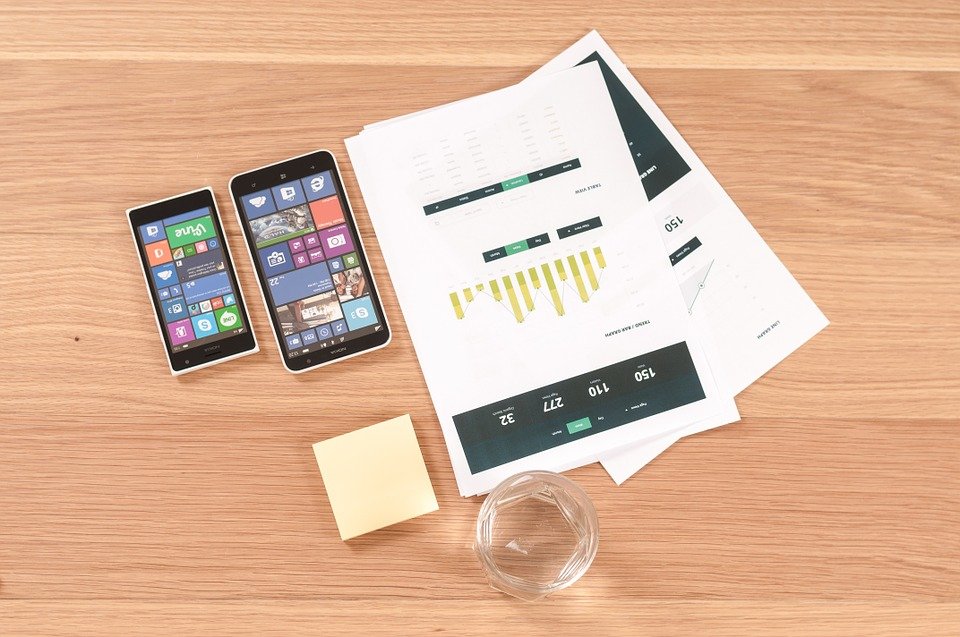

Nowadays, it is not strange to see how more and more businesses open the door to the digital era and join the app phenomenon, creating one of these novel tools for their benefits, which are not few. This fact is not taking place for the convenience of the companies themselves, but it is the users themselves who demand the digital turn towards mobile applications. Let's analyze this situation with some empirical data: according to 2016 a report in Europe, 78 out of 100 inhabitants have a smart mobile phone (smartphone), the global mobile traffic will grow about 8 times between 2015 and 2020 and, in In the world, the use of applications already accounts for 54% of the time spent in the digital world.
As the attention of the digital user is one of the most limited and valuable resources, it is logical that a robust and comfortable app is a basic instrument for any company to compete for that time of navigation. If we also take into account that payments by mobile phone have only just begun, as the explosion of the tech sector reveals, business opportunities are more than clear.
Why should your business have a mobile app?
Like in the late 90s, web pages made their way into the business world and today if you are not on the Internet you do not exist, the same is happening with mobile applications. So, what advantages does an app have over a website?
1. Always present
Our app will be very present and continuous on our customers' smartphones. Every time the user visualizes their phone, our brand will be there, contributing to this to their presence in the minds of our consumers.
2. Always available
The app is installed on the smartphone or tablet, accessible for immediate use, unlike a website that requires opening a browser and searching the site. And, more importantly, apps have become the main means by which a company interacts with its customers, without going through the process of either having a "physical entity" or a web page.
3. New mode of communication
Mobile devices are important communication channels in which to share news, images and relevant information for users or customers. And not only that, apps allow you to perform previously impossible tasks, such as buying from the couch or making bank transfers without having to step on a bank.
4. Improved relationship with customers
Possibility of establishing direct communications with your clients, generating immediate stimuli in the users.
5. Broad dissemination of content
The synchronization of the app with the company's social networks improves the dissemination and virilization of the contents.
6. Greater visibility
A mobile application, being hosted in major app stores such as Google Play Store and Apple App Store, will be available to thousands of users interested in your product.
7. Notifications
You can create a stronger relationship with your users than you could get using other means, as you will be as close to them as they are to their devices. For communication, you can send notifications with promotions, discounts, offers, surveys and much more. Of course, you will have to measure the frequency well so that the user does not decide to uninstall the application.
8. Generates engagement
The best thing about the mobile channel is that companies are given the possibility to participate with their customers in real-time, depending on the location, the schedule and their tastes, providing the opportunity to create a profile and respond under it.
What does project management look like in this
PMOs have a primary role in the development of an application since, without their management tasks, the necessary work could hardly be carried out in a coordinated manner.
After all, an app is usually not a single project, but its implementation requires the coordination of different projects and multifunctional teams. On the one hand, for example, the business development work will be aimed at exploiting the new channel as a source of revenue; on the other, all the work related to data integration; and finally, the creation of the app itself and its benefits. Without advanced project management, it is difficult for the app to not become a nightmare.
The project manager will be in charge of mediating between us (as project promoters) and the team, maintaining the tempo of the development of the application to meet deadlines and that everything is ready to work in the best way possible, which includes the maintenance of the application and all the tasks that are performed afterwards.
Where do we start
Perhaps the most suitable to launch the creation of the app are the Director of Innovation or the Director of Information Systems, since their functions are very intertwined with the development of the application, according to the guidelines that exist marked the strategic plan of the company. Within the timeline that an app development project would include, we find:
1. Have a good idea
If you already have an idea for your application, you can skip this point. If not, what you need is to look for a problem or need to solve it. That is: how can you add value to your client by interacting with him through an app? What kind of services and features can be moved from the physical context to the digital environment?
2. Planning
The ideas and business plans are very good, but proper documentation is even better. Market studies, MVP development, initial launch, schedules, budget ... They will have to be included in your business plan, which you will review hundreds and hundreds of times. It is recommended that the project manager take over the planning through agile methodologies that allow launching a functional prototype as soon as possible
3. Develop the application
Create the Wireframe (the process of creating a model or prototype of the application). We must be clear if we want our app to be available for the Android, iOS or Windows Phone operating system and if it meets the requirements that these systems impose. At this stage of the process, the interface design and roadmap with which the user will navigate through the app also enters. It would be very useful for the developer to sketch the servers, APIs and data diagrams.
Developing an application is by no means a cheap affair. The cost for developing an app ranges anywhere from $5000 - $20000 (or more). The process of getting an app developed can be a little complex. Lets break it down into smaller steps
- The research prior serves to lay the necessary on which sustain our development, as well as provide us with the necessary information about our main competitor's bases.
- We must perform the wireframe and documentation of the application to be able to perfect the initial ideas and continue on the right path. It is also convenient to create a roadmap to visualize how the screens are linked together and how users would navigate the app. At this point, you have to keep in mind what makes users use an app in front of a website.
- Once we have the bases laid, we will have to evaluate the technical feasibility: make sure that the back-end system supports the functionality of the app. To do this, you must access information provided by public APIs and, depending on the format of our app (mobile, Tablet, laptops, etc.) and the platform used (iOS, Android, etc.), it will have different requirements.
- In the development phase, the different parts of the application, broken down into user stories, are assigned to project members in sprints, that is, delivery cycles of about two weeks. This allows the minimum prototype to be ready for testing as soon as possible.
4. Prototype
Build a rapid prototype to understand first-hand what works and what doesn't in your app and thus be able to change it. Everything doesn't need to be perfect, it simply offers the user an experience similar to the one he would have with the finished app so that you get the feedback you need to be able to continue and finalize your app project.
5. Testing
It will be necessary to have a prototype ready to be able to test it with possible users of the finished app. Have them browse your wireframe and monitor all their steps to know what you need to improve to better adapt your app to users.
6. Review and improve
Once you have submitted your future app to all possible tests and made the necessary changes based on the feedback collected in the “tests”, you should polish the idea, use and purpose of your application. This involves adding new user stories to the project and going through the development, testing and review phases until the product is ready to go to phase 7. For this reason, it is so important to have a definition of finish that allows the team to move between tasks without eternalizing.
7. Launch and maintain
After having published the finished application on platforms such as Apple Store or Play Store, a process that can take us from a few hours to a few days, depending on whether or not it complies with the regulatory policies of each system, we must carry out its maintenance, which includes updates, better and even the development of new features. The customer must also be given technical support to solve possible errors or bugs that have not been detected during the tests.
Need help with your mobile app? Get in touch

How to convert a web app into a mobile app
Today, we can see the use of different kinds of applications or software for accomplishing various business tasks. From managing inventory of a...



